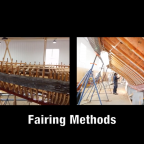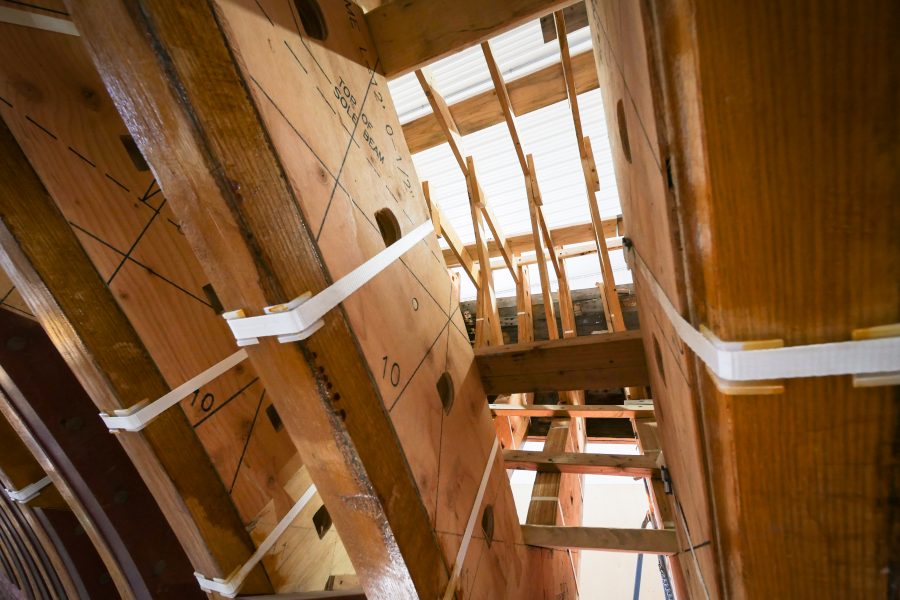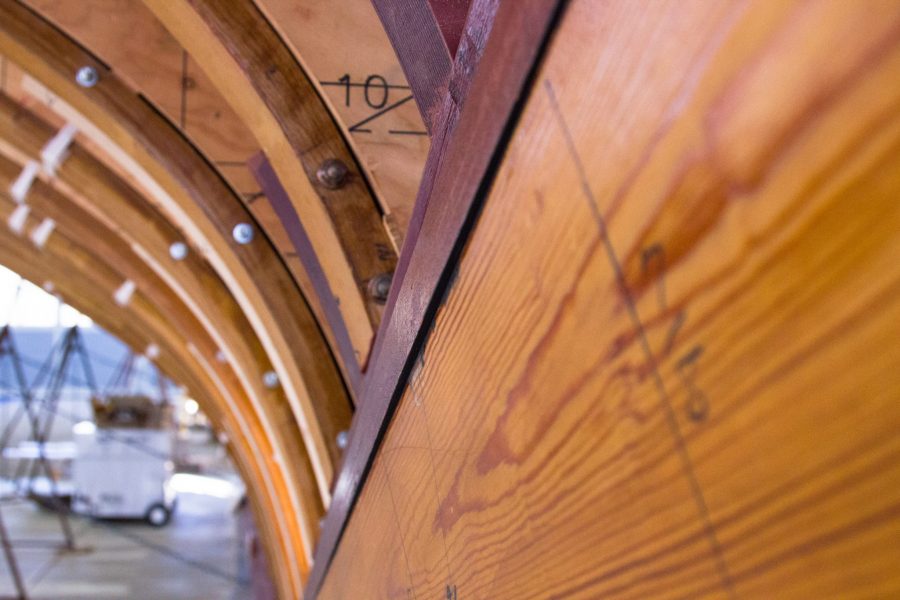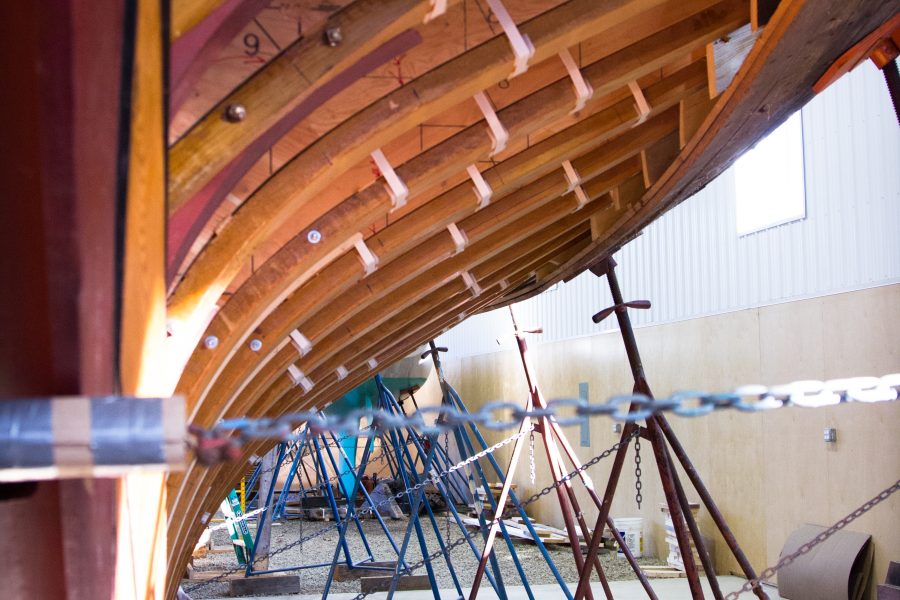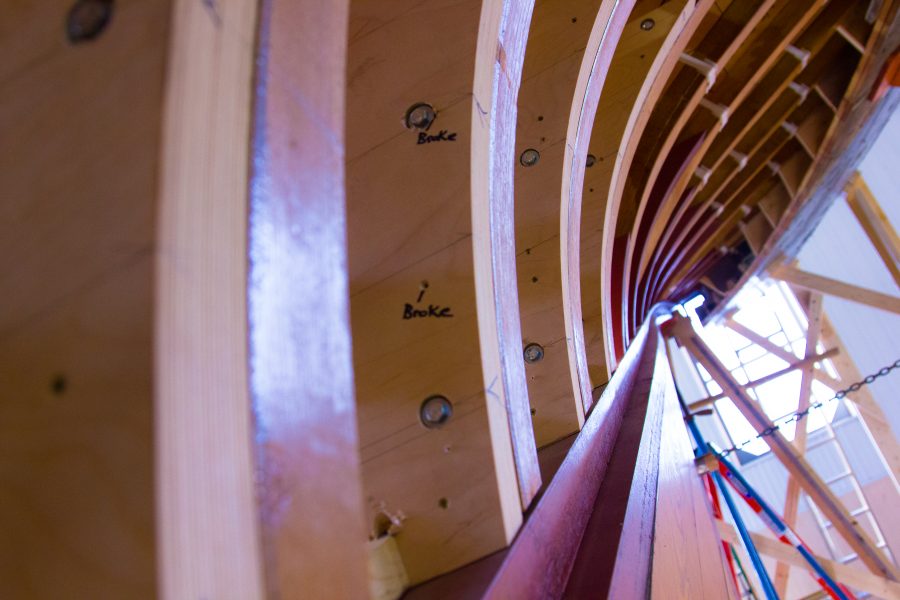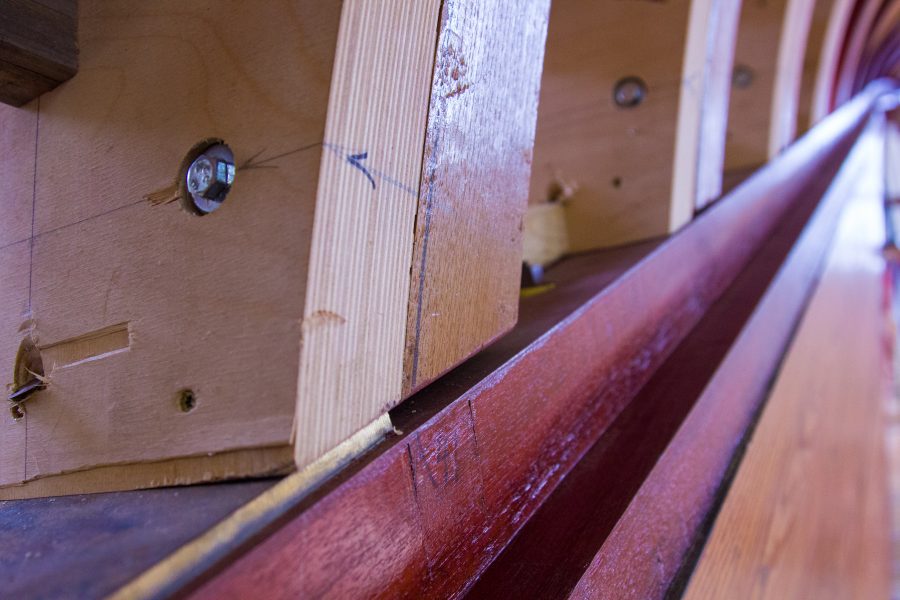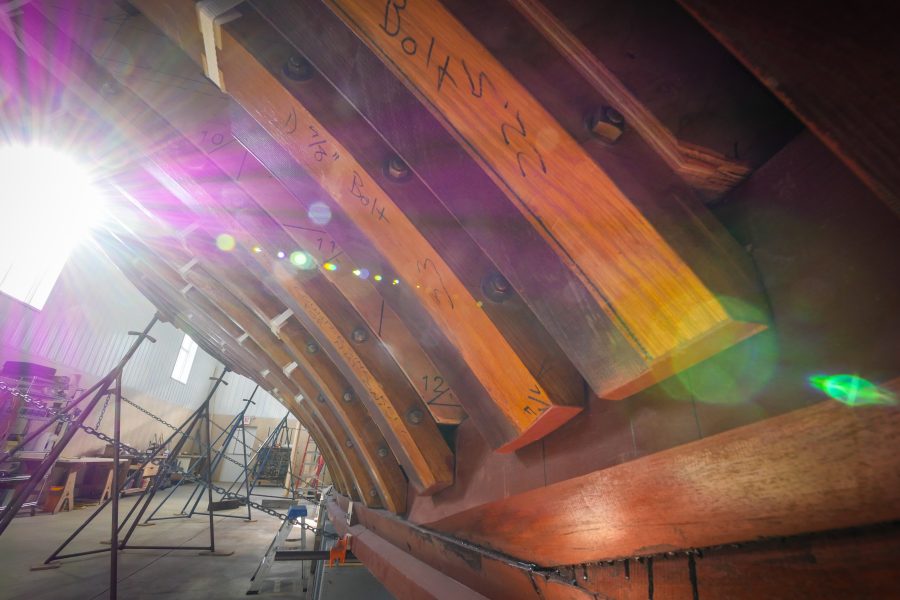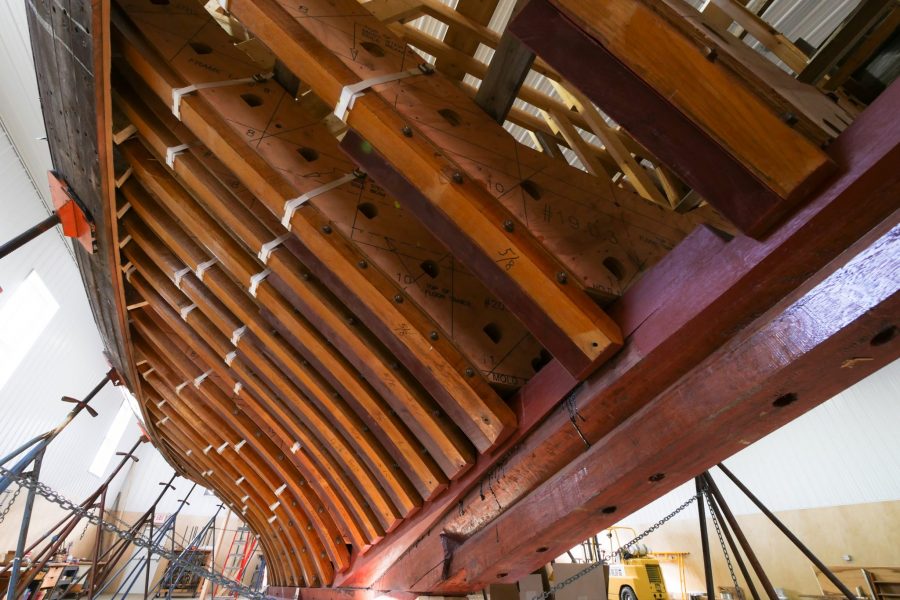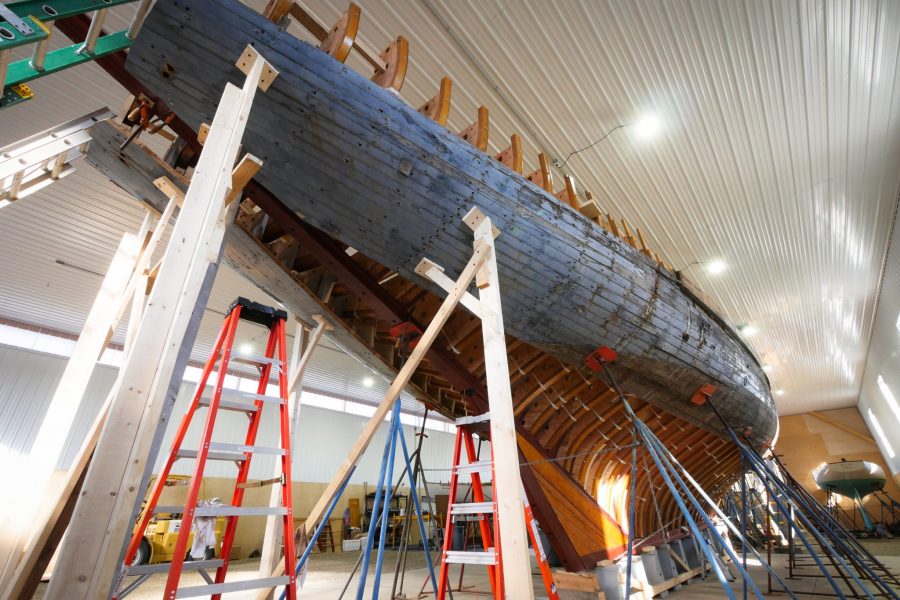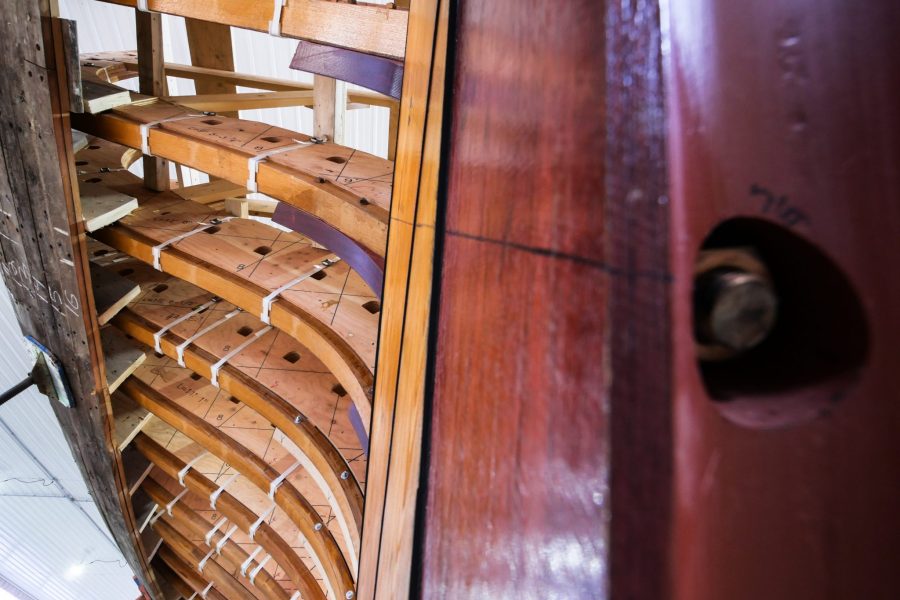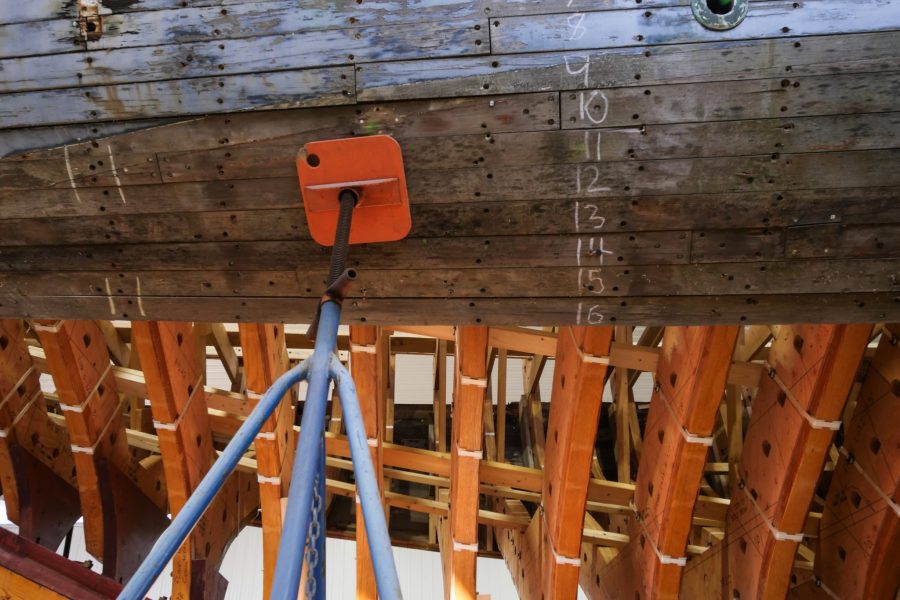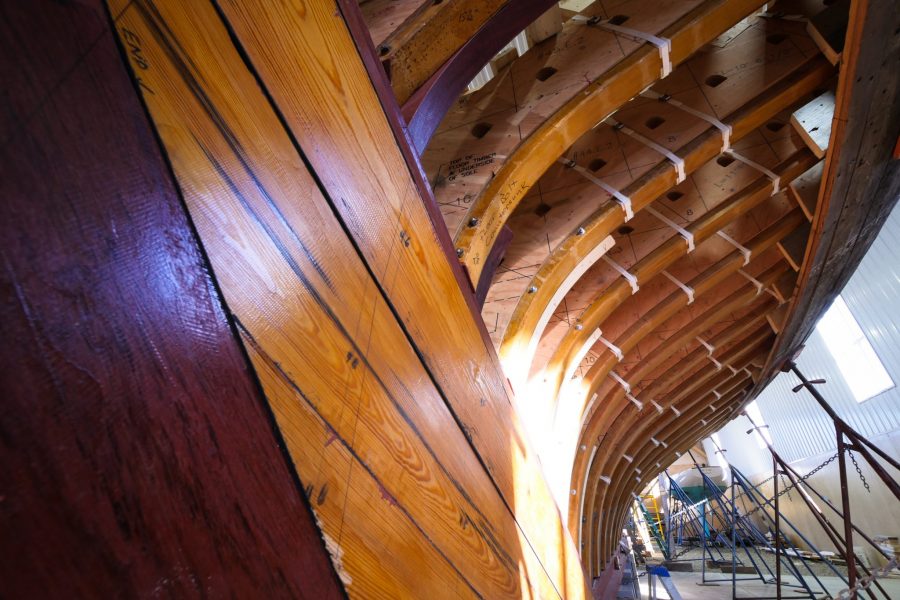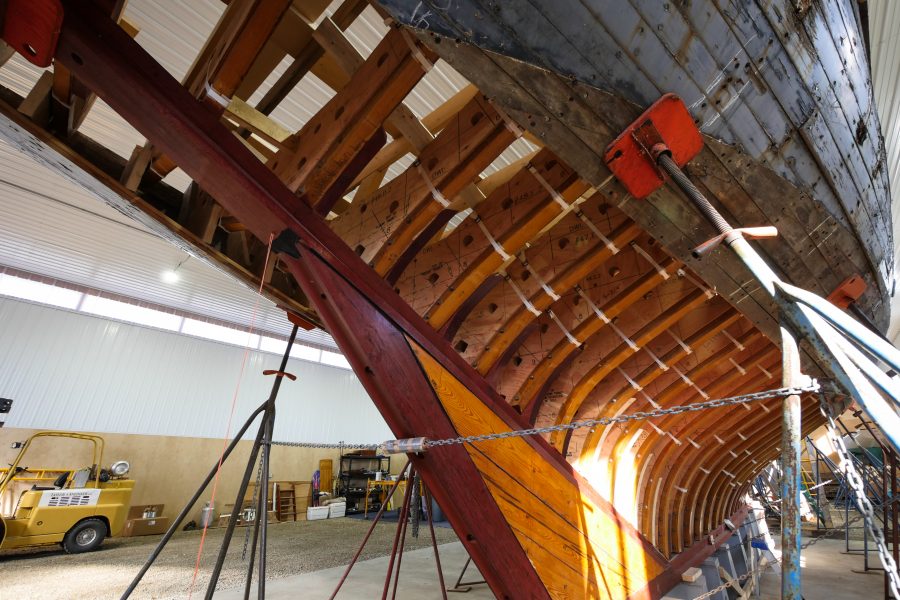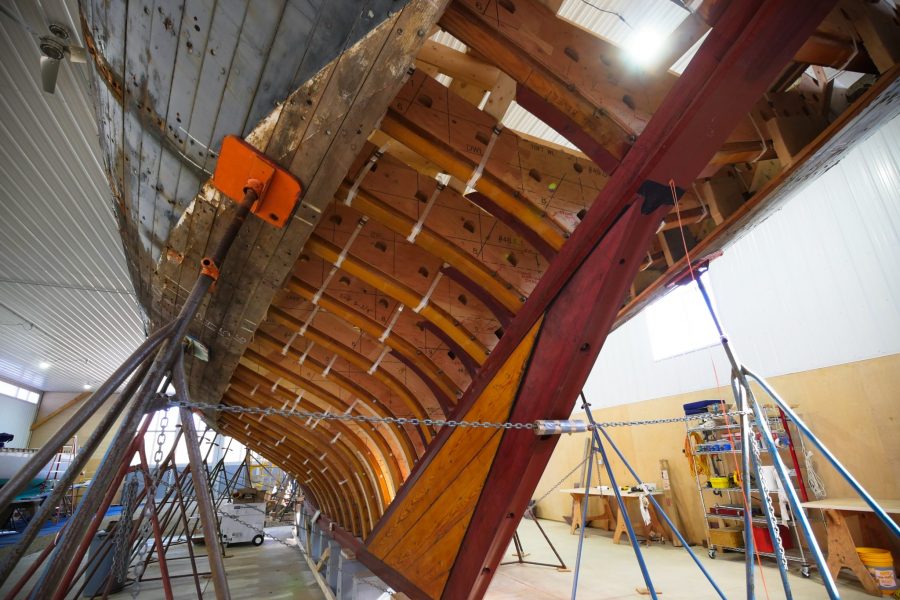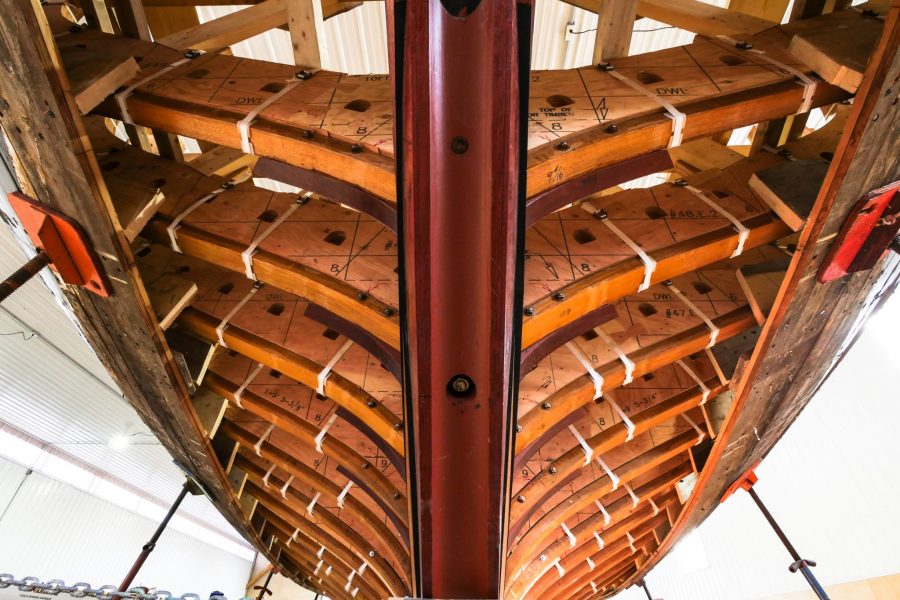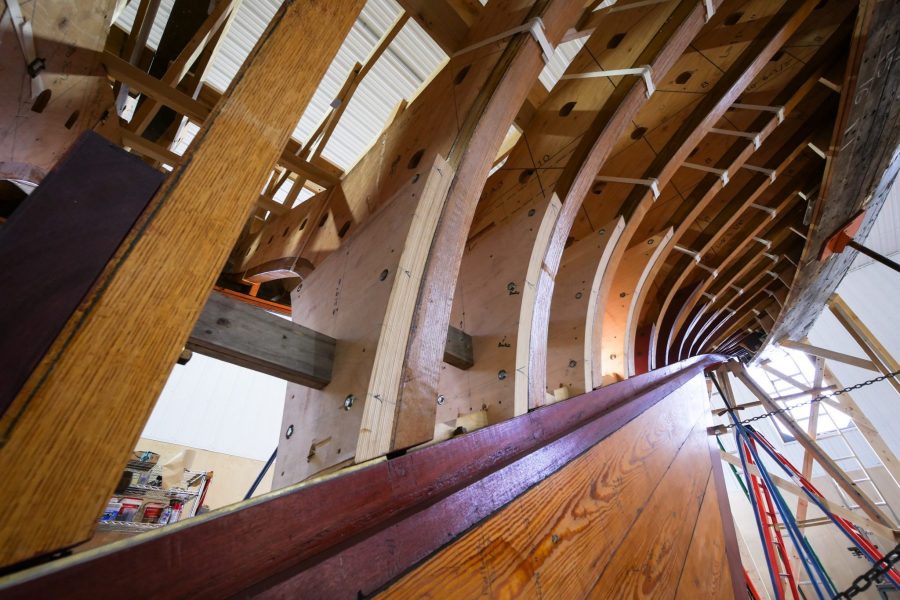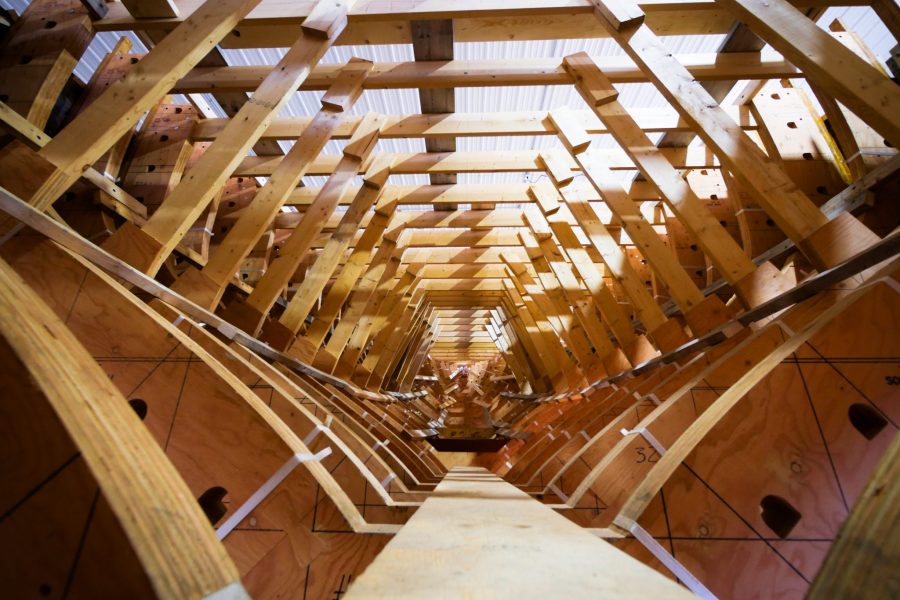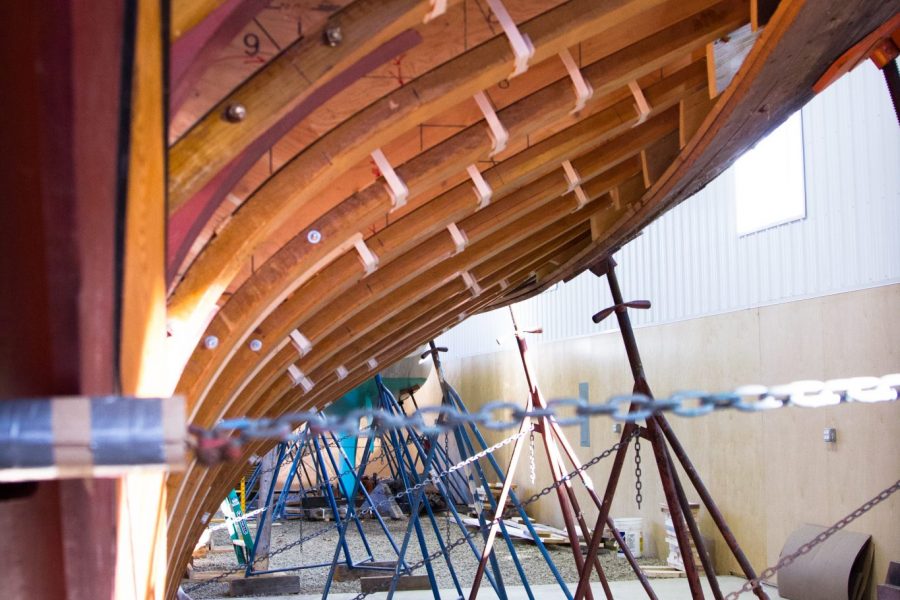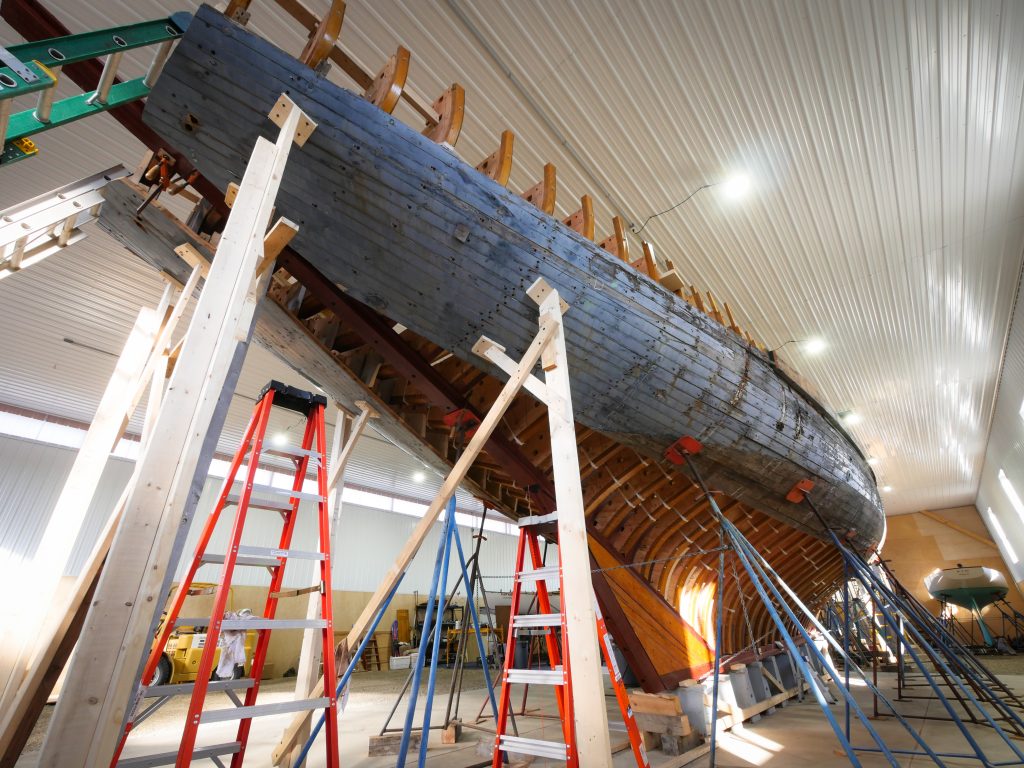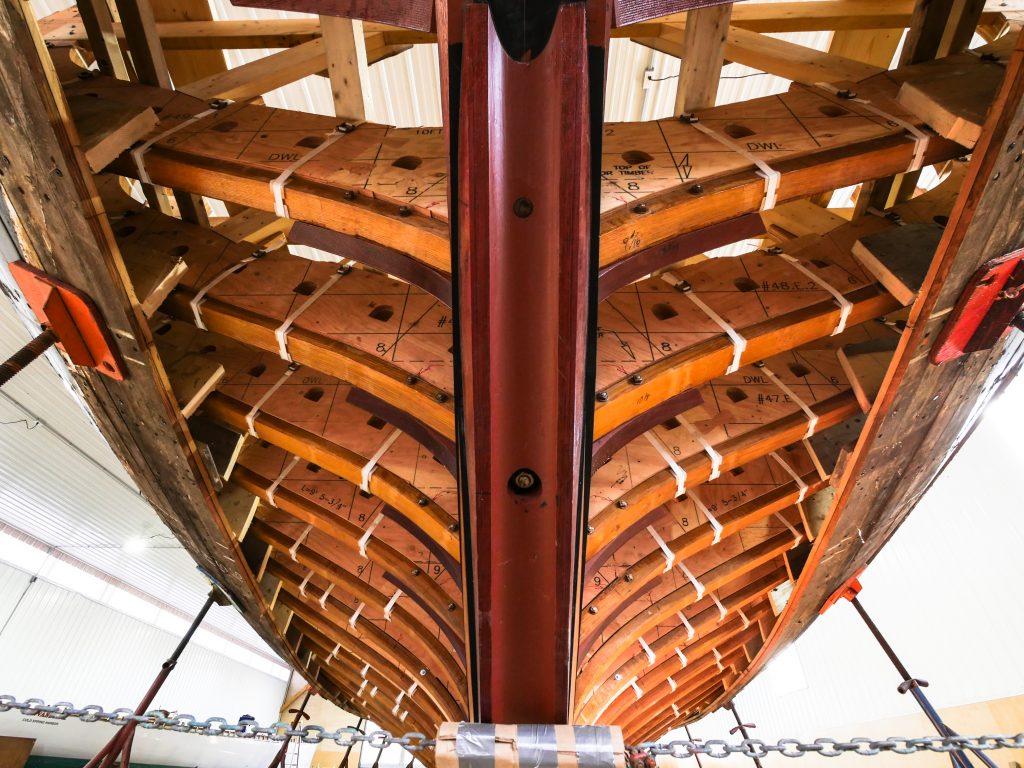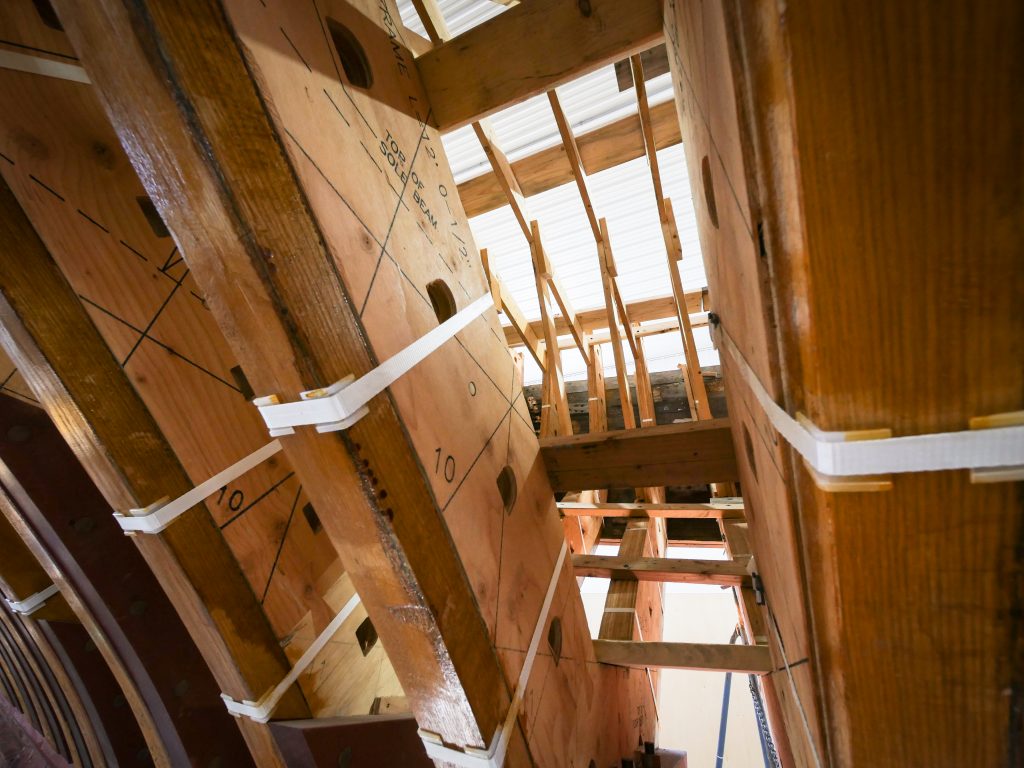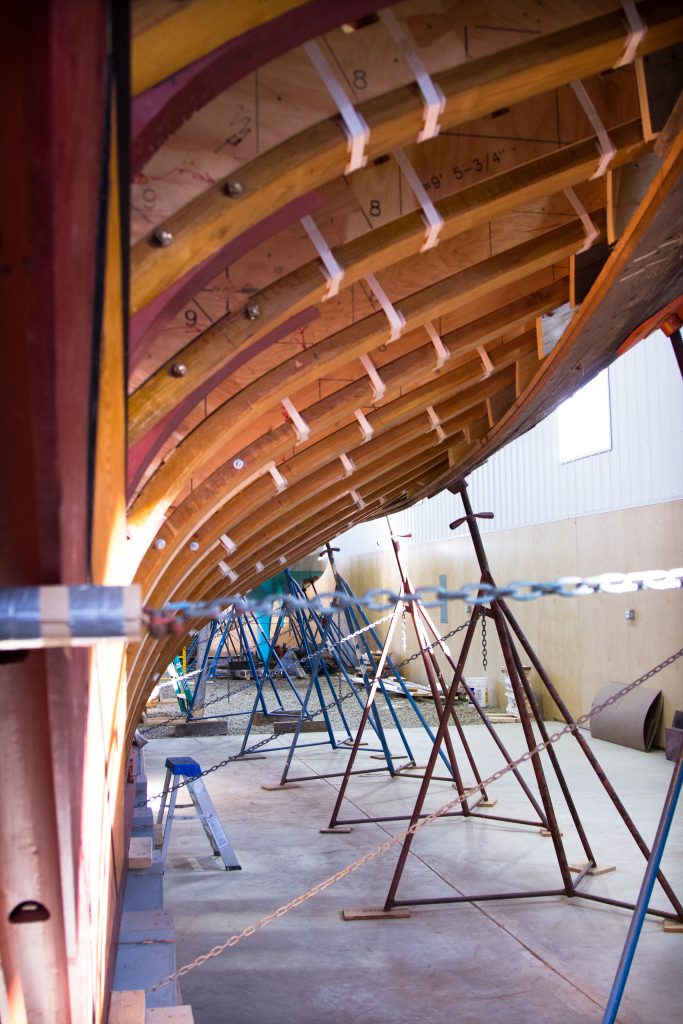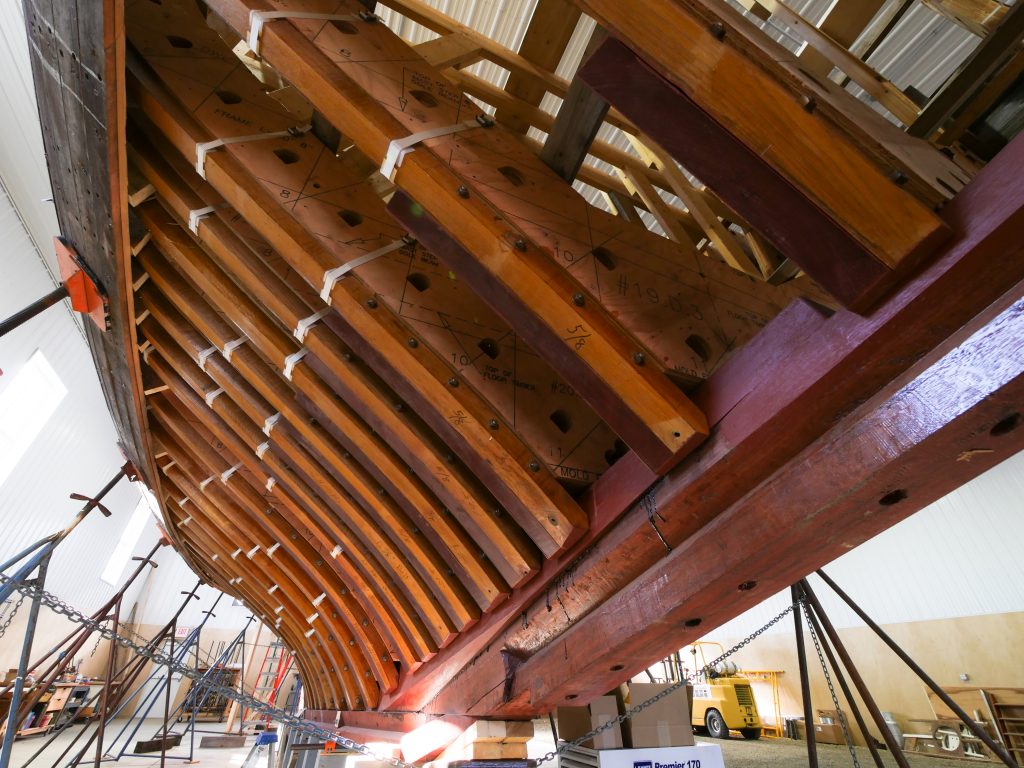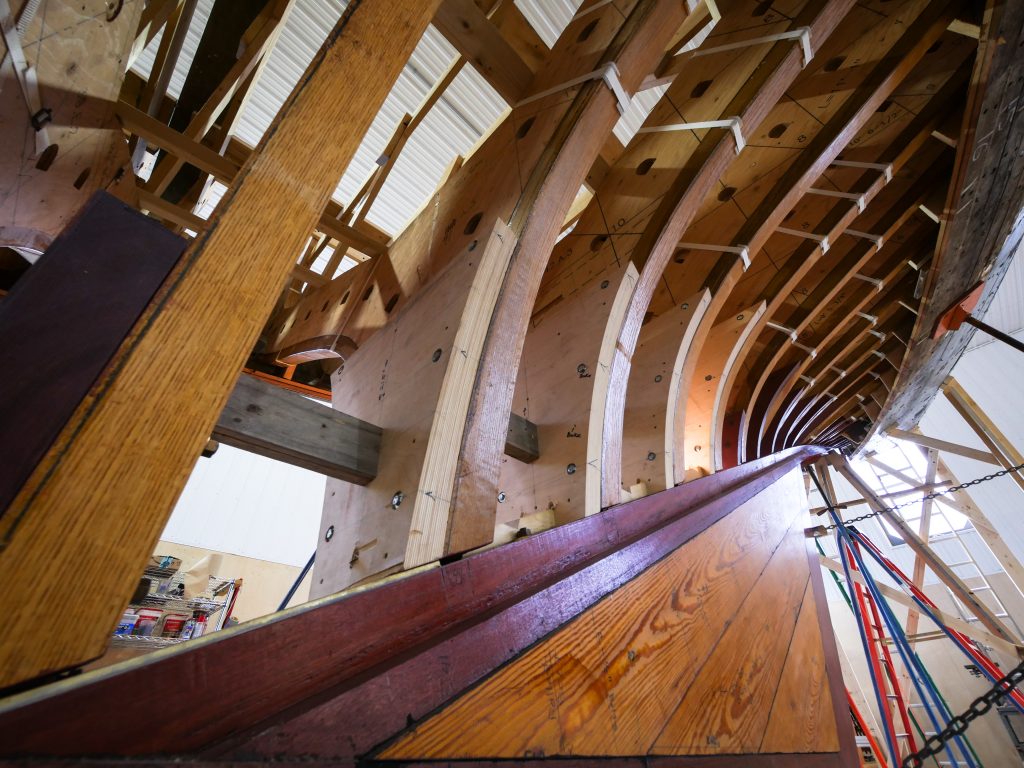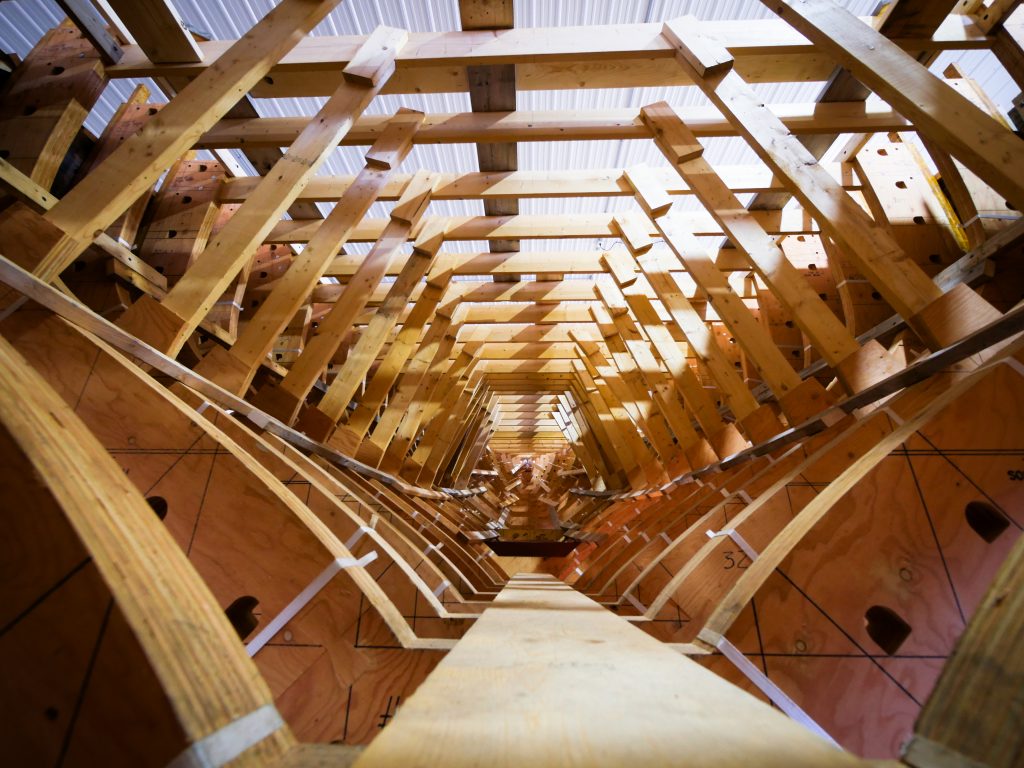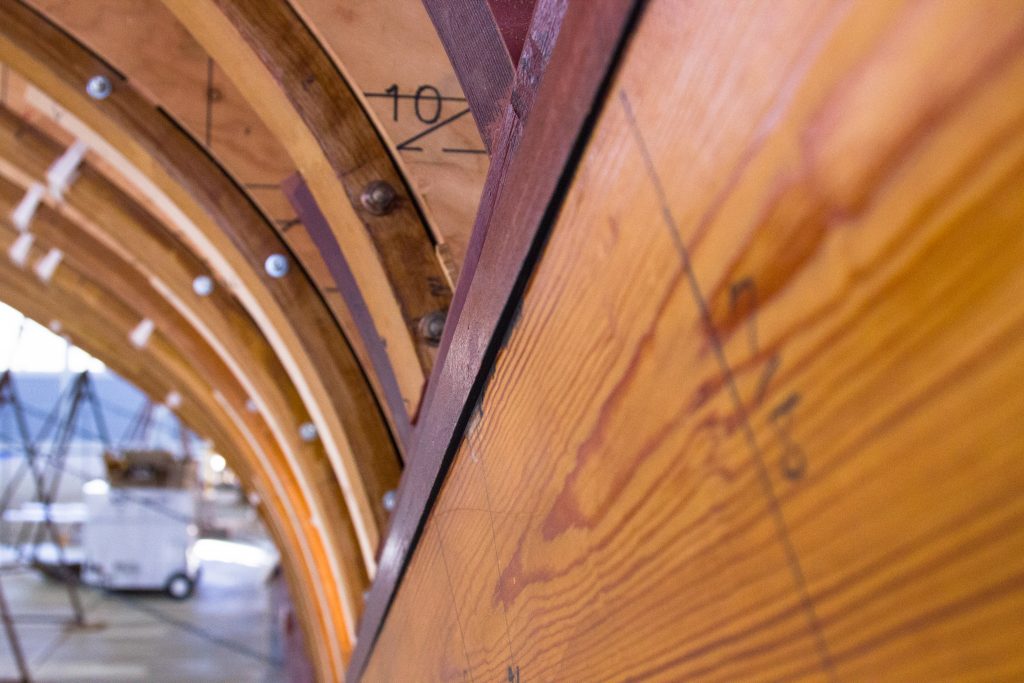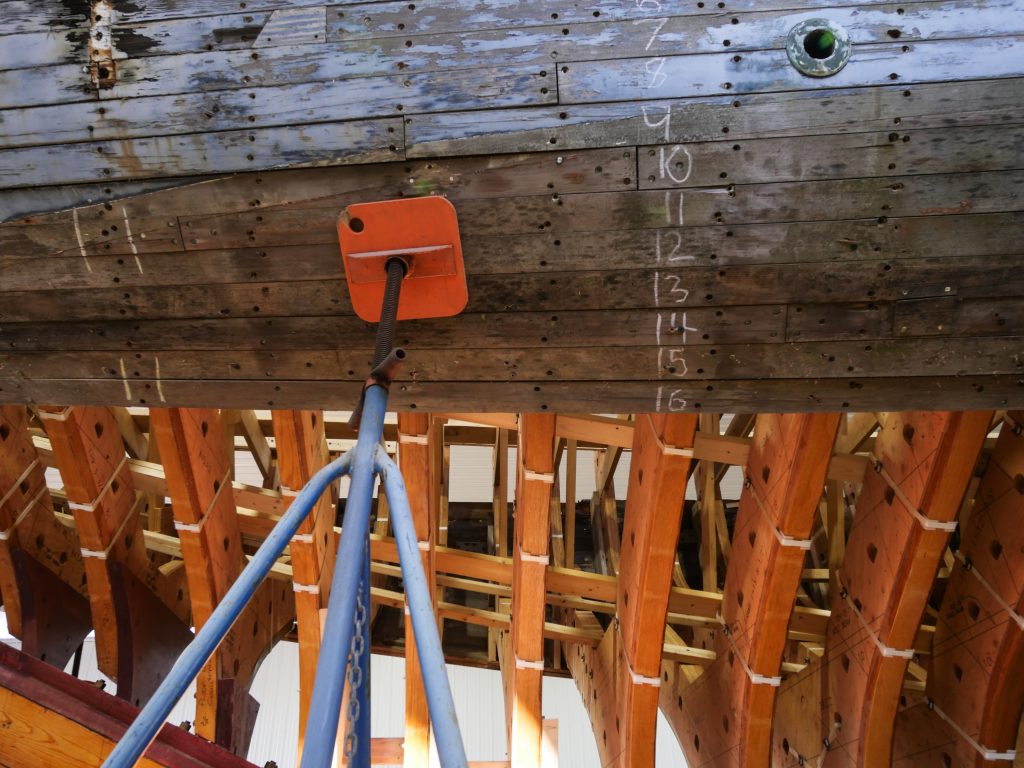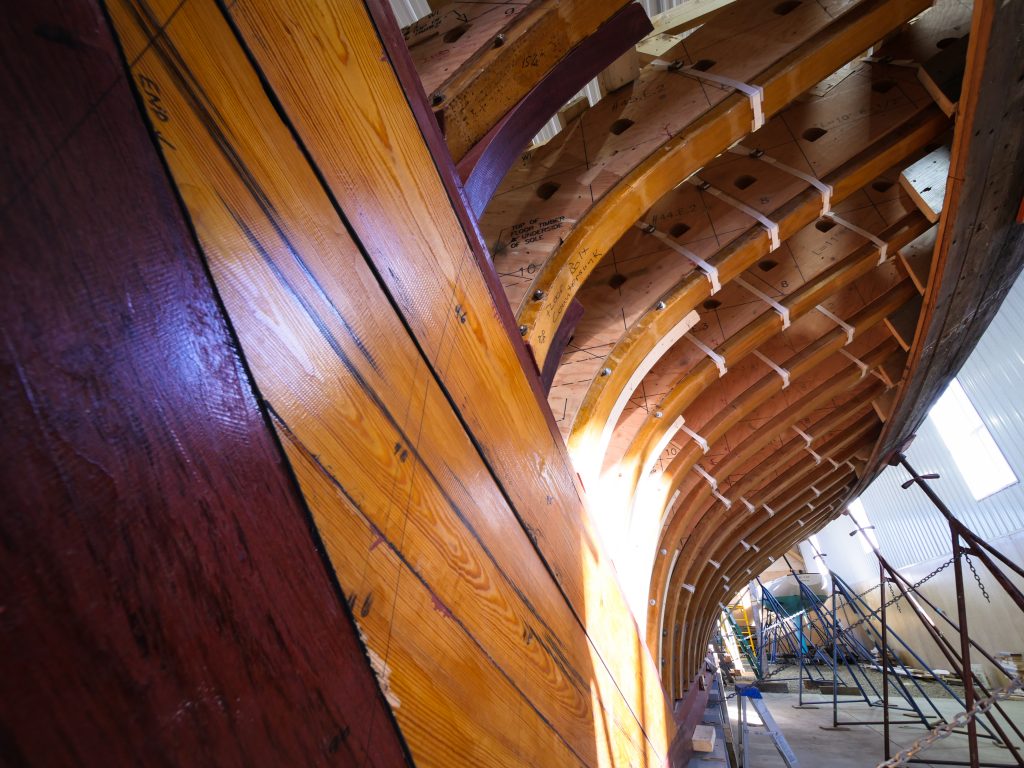
New year, new shop, new frame – old shape, old shell
For Doris’ second hundred years, we must repair or replace any piece that’s not up to the challenge. What last year looked like an old boat with some new parts, and will soon look like a new boat with a few old parts, right now appears as two equal entities: a tired old carcass enveloping and imparting 114 years of life onto her crisp new skeleton.

Restoration as Doris was originally built, with a few modern concessions
We know how Doris was built in 1905, and we intend to replicate the process and the product. While others may have made a compelling argument to glue-laminate her new frames, use another planking method, and even sheathe her in fiberglass, we looked at the original boat after more than a hundred years of hard life – and felt that there is very little we could do to improve upon her original construction. If it ain’t broke, don’t fix it.

Different Species, but not for the reason you might think
Wood was harder to get in New England in 1905 than it is today – and Herreshoff went through mountains of it. The backbone – stem, keel, sternpost – of design #625 was specified on the plans as white oak. In Doris, most of it was actually the more-common and less-durable red oak, and not very good quality. We can get white oak of the sizes required, and it would be perfectly adequate for Doris’ next hundred years. But, we decided to use purpleheart from Guyana. We can get purpleheart in larger sizes than white oak, and it is more rot-resistant, resistant to marine borers, harder, and stronger than oak – but none of those are the real reason we chose it. The reason is because it’s more dimensionally stable: it shrinks and swells less with changes in moisture content than white oak does. It will take us longer to rebuild Doris than it took Herreshoff to build her. In the early 20th century, she spent a few months in a drafty, lightly-heated shop right on the water. In the early 21st century, she will spend years in a tight, insulated, heated shop inland. If a keel was cut to the right size from wet white oak, it would get smaller as it gets drier (think inches, not millimeters) before completion. If the keel was cut to the right size of dry white oak, it would get inches wider shortly after launching. Using a more dimensionally stable wood than oak – purpleheart – and carefully monitoring the moisture content will minimize – not eliminate – the problem.

Not Experiential Archaeology
At Snediker Yacht Restoration, we have built and rebuilt boats by the Herreshoff Method – we don’t need to wear fedoras and neckties while working, or pretend that boat stands, plastics, and woodworking machines haven’t developed over the last hundred years in order to ensure that the relaunched Doris is the same boat launched in 1905. The “they would have used it if they’d had it” argument can be used to justify nearly anything, and eventually leads to someone saying that Nat Herreshoff would be designing commercial spacecraft instead of sailboats if he were alive today. But, if we can use a more efficient tool than original, without detrimental effect on the product, we do. Given the scale of the Doris project, we have to. Here we see steam-bent white oak frames held to CNC-cut plywood molds with nylon binding straps, instead of iron staples called “frame dogs”.

You’re not the same shape you once were either
The new molds and skeleton of Doris are, as precisely as it is possible to achieve, exactly the shape Doris was when she was launched in May of 1905. Like many Herreshoff yachts, she has double planking above the waterline for rigidity, and for the aesthetics of tight topsides seams. Well into her twelfth decade, those original double planked topsides, screwed and glued together with thick shellac, are still remarkably rigid. But wood is elastic, and all those years of gravity have changed the shape in a way that she can’t instantly spring back from. Here you see the gap of a few inches between her old planking and new frames – which, considering Doris’ size and age, is a remarkably close fit.

The Biggest Small Boat
Doris has often been called “the largest all-wood boat built by the Herreshoff Manufacturing Company” – because all the boats built at HMCo. that were larger than Doris either had a metal frame, or were entirely metal. Whenever it takes that many words to define a superlative, you might think it’s not that important a distinction – but in this case, we’re saying that she is the largest small boat we know of. In the 19th century, there were great advances, brought about by the pressures of racing, in the light and strong construction of small boats. Larger wood vessels, though, were either still built like ships – double-sawn frames and heavy trunneled planking – or had riveted iron structures, like the bridges of the era. The schooner yacht Coronet, 20 years older than Doris, has construction much more like the USS Constitution than that of a racing dinghy. Doris, though, is immediately familiar to anyone who knows small wood boat construction.

If it IS broken, then fix it!
We really can’t explain how Doris survived so well for so long. When we work on boats younger than Doris, they have usually been extensively repaired over the years. Because she is so completely original, and we know so much of her history, Doris has been a unique opportunity to analyze a 114-year old experiment. All the species of wood that went into her have held up surprisingly well: that less-than-perfect red oak and the “moderately decay resistant” douglas fir outer double planking survived remarkably well. The white pine decking was pretty well shot, but that had been the unpreserved roof over the whole thing for a very long time. Of course, the longleaf yellow pine bottom planking and cypress inner planking are as perfectly preserved as you would expect them to be. The metals in Doris included brass, bronze, galvanized mild steel, and cast malleable iron. The bronze survived perfectly. The cast iron hanging knees are in good shape. Even the brass fastenings are in better shape than we would have expected – perhaps owing to a time when we dumped less electricity into the ocean than we do now. But the galvanized steel – which was used only to save money at a time when about 75% of the cost of a yacht was materials – had not only rusted away, but degraded the wood around where the steel touched it: what we still call “iron sickness”. In most places, the only traces remaining of the original galvanized steel diagonal hull and deck strapping are rust-colored stripes on the inner hull. Because materials costs are a smaller percentage of the total budget than they were in 1905, and because we are thinking about a hundred-year lifespan, as opposed to 10 or 20 years more common in the late 19th and early 20th century, everything except reused hardware like the iron knees will be replaced with bronze.

Primum Non Nocere
First do no harm. The Hippocratic Oath as it applies to woodworking tells us not to do anything to the wood that will make it last less long. We’ve been sold so many paints, varnishes, glues and sealants over the last century that most people don’t even question what it is that they are supposed to be doing. Coatings applied during construction are simply to slow down the coming and going of moisture – because something that dries quickly is likely to check. But, you don’t want to apply anything that is difficult to apply, slow to cure, will impede working the surface, or will adversely affect the adhesion or aesthetics of future coatings. Shellac is a hard resin excreted by a certain beetle (the SHELL of a LAC beetle!), that dissolves in alcohol. When the alcohol evaporates, the shellac resin is left behind. Put alcohol on it again, it dissolves again, making liquid shellac again – even if it’s 1000 years old. This very simple property makes it different from every other oil, paint, varnish, or epoxy you could use. Alcohol dries very quickly. It’s clear or an amber color. It can be scraped, wiped, or sanded off. It doesn’t dull edge tools. It doesn’t contaminate any future coating. It’s not a petrochemical. It’s what they used in great quantity at HMCo. Slowing down moisture has more to do with skin thickness than what the material is – and one coat of shellac doesn’t make a very thick coating, so it’s effectiveness as a moisture barrier isn’t great – but it helps, and it does no harm. The coating you see on the new, permanent parts of the boat is three-pound-cut amber shellac.

A beautiful stage
Soon, planking will begin at the bottom, with longleaf yellow pine garboards fitted to the keel rabbet and bent to the curve defined by the frames. Then another plank fitted to those, over and over until the sheer is reached and the hull is shut. When Doris is completed and launched, she will be very fair, smooth, and painted white. The way the shadow and light plays off a smooth white shape, like a marble statue, brings into sharp focus subtleties of shape. And Doris’ shape is subtle, with no exaggerated curves or audacious hollows. Hers is an austere beauty. Even though she is a monument to the opulence of a Boston banker at the turn of the 20th century, she embodies a Puritan New England humility and understatement. But at this moment, in all these photos, when her structure is complete and her sheathing absent, she has a very different beauty – one I have to say I might prefer. The intricacy of the hidden structure. The awesomeness of seeing a dinosaur skeleton in a museum, or looking at the underside of an old bridge. The contrast of colors and textures in different materials. Every piece of her – including the temporary – is a carefully designed and built individual entity, a free-standing independent sculpture, and also a compliant contributor to the whole.
